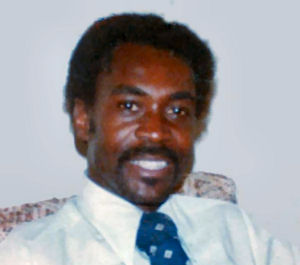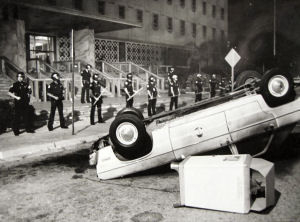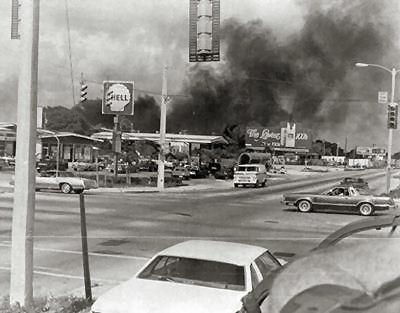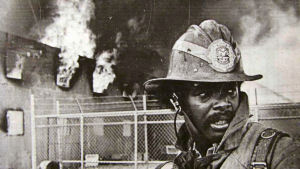![]() My experiences in the Miami Riots 1980
My experiences in the Miami Riots 1980
|
 |
In 1980, The United States of America was far from peaceful. President Jimmy Carter was seeking re-election in the middle of a deep recession, and was heavily behind in the polls to future President Ronald Reagan. Carter's chances of winning a second term were not helped by he price of petrol doubling over the previous two years, and interest rates reaching 17%. On November 4, 1979, 52 United States diplomats and citizens had been taken hostage after a group of militarized Iranian college students who supported the Iranian Revolution, took over the U.S. Embassy in Tehran and seized hostages, who would be held for over a year, and on Christmas Eve 1979, the Soviet Union had invaded Afghanistan. Miami, meanwhile, was being led by its first Latino mayor, Maurice Ferré, but money and violence was resulting from the burgeoning cocaine trade. There was a mass immigration of Cubans supposedly running from Fidel Castro’s communist regime, but in reality Castro had sent over the prisoners in his jails and patients from his Mental Hospitals. |
To add to Mayor Ferre's problems, in the early morning hours of December 17, 1979, a group of six white police officers had stopped thirty-three-year-old Arthur McDuffie, who was riding a black-and-orange 1973 Kawasaki Z1 motorcycle. McDuffie had accumulated traffic citations and was riding with a suspended license. According to the initial police report, he had led police on an eight-minute high-speed chase through residential streets at speeds of over 80 miles per hour (130 km/h). Arthur McDuffie was beaten by the arresting officers and died on December 21, 1979. The subsequent trial of the officers ended with the aquittal of all Police Officers involved. The jury delivered their verdict on 17th May 1980. |
 |
 |
I arrived in Miami late on the same evening that the jury found the Police Officers not guilty. While I was checking into my suite at the Fontainebleau Hotel, I heard people talking about rumours of violence on the streets of downtown Miami. I was, at that time, unaware of the racial and political tensions that were gripping Miami, so I decided to set off for the centre of Miami. I took a cab down towards a bar I had been told of in the Little Haiti district, only to be taken right into the centre of a rapidly growing riot. As the cab approached Little Haiti. We rounded a corner to see a car being overturned by a small crowd of people. As soon as the car rolled onto it's roof, a petrol bomb landed on the underside and shattered, sending a flash into the air and sent flames spreading along the chassis igniting the tyres. |
Still not knowing that I was witnessing, the beginning of what was later to be known as the McDuffie riots, I climbed from the cab and tried to help the two people I could see trapped in the car. The cab driver, probably having a better sense of the racial tension in the air, chose that moment to turn the taxi around and get out of there, abandoning me right in the centre of what looked like a war zone. Above me, the sky was one great, big chaotic mess; clouds smoke jumbled up together with no sense of direction and no purpose except to block out any evidence of light. Their sudden appearance seemed unreal; neither dead nor living, just there. |
 |
 |
I opened the rear door of the car and a young woman inside half crawled, half scrambled from the flaming wreck. Immediately sirens began to blare all around me, the smoke started to fill my lungs and made me gag as I reached back into the car for the second figure I had seen there. I am currently writing a book that will be finished early 2022 ,about why I was in Miami in the first place and details of the events I experienced. The rioting in Miami 1980 resulted in at least 18 deaths,350 injuries and 600 arrested with $100 million in property damage. |